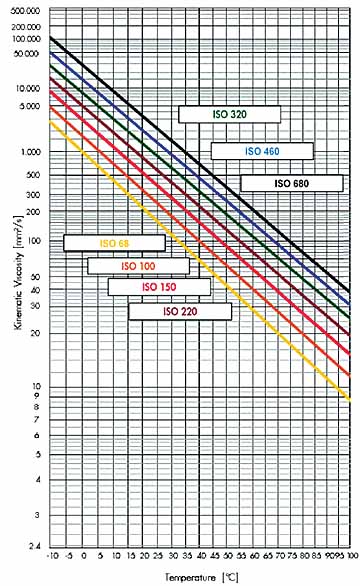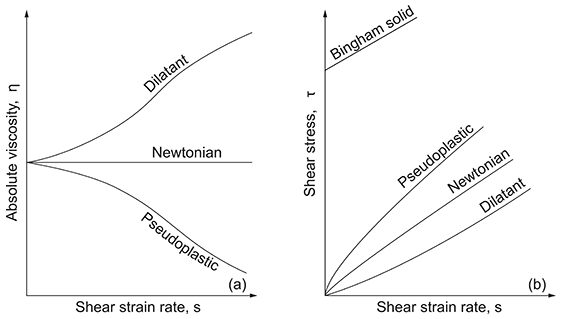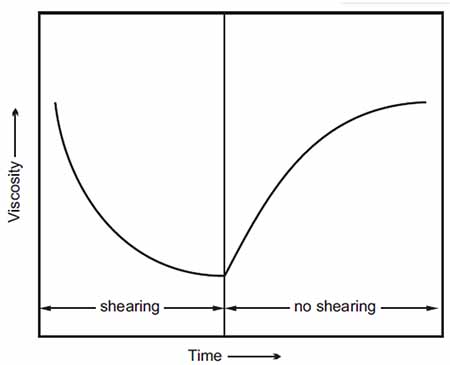Similar to the molasses and water examples above, different factors can affect the viscosity of a liquid. For instance, water can assume other states depending on the temperature.
If water is at its freezing point (0°C), it can turn to ice but remains liquid at room temperature (around 20-30°C). Then, at 100°C, it can turn into a vapor. Its viscosity can change depending on the influencing factors.
Four factors affect oil viscosity:
- Temperature
- Pressure
- Shear rate
- Oil type, composition, and additives
Temperature
As seen with the example of the water above, when the temperature decreases, the water can turn to ice. Similarly, for lubricants, as the temperature drops, the viscosity increases. This means the oil will get thicker or more resistant to flow at lower temperatures. Likewise, as the oil heats up, it can become thinner.
This is similar to a block of ice melting as temperatures increase. Its viscosity will decrease, and the ice will turn to water. In this case, the internal molecules gain more energy with the increase in temperature, lowering the internal friction within the fluid. As such, the viscosity also decreases.
Since the oil’s viscosity will change with temperature, most OEMs will supply a temperature–viscosity chart for their equipment to help ensure the correct viscosity is used depending on the operating temperature.
In the figure below, gear oils of varying viscosities are plotted against the temperature for a particular piece of equipment. OEMs will typically specify the optimum operational viscosity range for their equipment.
It is then up to the lubrication engineers to determine the ideal viscosity based on the conditions of their equipment (this can vary depending on the application).

From the figure above, one can see that at 40°C, most of the gear oil grades correspond with their viscosities (ISO 68 corresponds with a 68 viscosity). However, at 0°C, an ISO 68 gear oil can become 1000 cSt, while at 90°C, this same grade of oil is around 11cSt.
Interestingly, all of the oils listed here can achieve a viscosity of 100cSt but at different temperatures, as shown below:
- 32°C – ISO 68
- 40°C – ISO 100
- 47°C – ISO 150
- 55°C – ISO 220
- 63°C – ISO 320
- 68°C – ISO 460
- 75°C – ISO 680
Temperature is a significant influencing factor of viscosity, but it is not the only factor.
Pressure
The effects of pressure on a lubricant’s viscosity are often overlooked. However, the viscosity-pressure behavior has become part of the calculation for elastohydrodynamic films. In these cases, oil viscosity can rapidly increase with pressure.
One such instance occurs with metal-forming lubricants, which are subjected to high pressures such that the oil’s viscosity can increase tenfold (Mang & Dresel, 2007). As the pressure increases, viscosity also increases, protecting the surface in these lubricant films.
The very definition of viscosity alludes to pressure’s impact on Newtonian and non-Newtonian fluids. For example, with Newtonian fluids (regular lubricating oils), the shear rate is proportional to the applied shear stress (pressure) at any given temperature.
As seen above, the viscosity can be determined once the temperature remains the same. However, Non-Newtonian fluids, such as greases, only flow once a shear stress exceeding the yield point is applied (Pirro, Webster, & Daschner, 2016).
Hence, this is why the observed viscosity of grease is called its apparent viscosity and should always be reported at a specific temperature and flow rate.
Shear Rate
For Newtonian fluids, viscosity does not vary with shear rate (Pirro, Webster, & Daschner, 2016). In fact, per the definition of viscosity for Newtonian fluids (regular lubricating oils), viscosity is a constant proportionality factor between the shear force and shear rate. Thus, even when subjected to greater shear forces, the viscosity will not change for Newtonian fluids.
On the other hand, for non-Newtonian fluids, the viscosity is influenced by the shear rate. Some non-Newtonian fluids can include; pseudoplastic fluids, dilatant fluids, and a Bingham solid, the effects of shear rate on these fluids are shown in the figure below.
A Bingham solid is a plastic solid such as grease that only flows above a particular yield stress. It can be seen that pseudoplastic fluids decrease viscosity with an increasing shear rate, while dilatant fluids show an increase in viscosity with an increasing shear rate. (Hamrock, Schmid, & Jacobson, 2004)

The shear of a lubricant can influence its shear rate. Typically, longer-chain polymer viscosity index improvers can shear over time. When this happens, it can result in a decrease in oil viscosity. Similarly, non-Newtonian fluids, such as grease, experience a decrease in viscosity as a function of shear rate (Totten, 2006).
Another essential characteristic to note is whether a material is thixotropic or rheopectic. For a thixotropic material, if it is placed under a continuous mechanical load over a period of time, the viscosity will appear to decrease over this time.
However, the original viscosity is restored after a specific rest period, as shown in the figure below. On the other hand, for rheopectic materials, continuous shearing causes the viscosity to increase. (Mang & Dresel, 2007).

Oil Type, Composition, and Additives
Various oil types, compositions, and additives can influence a lubricant’s viscosity. For instance, the five groups of base oils all have varying characteristics, as shown in the figure below. One can note the differing viscosities for the various groups.

When a finished lubricant is made, it usually consists of a base oil and additives. Hence, the base oil will have a significant role in determining the final viscosity of the oil. However, with the advent of Viscosity Index Improvers, desired viscosities can be engineered regardless of the base oil type being used.
Want to read the entire article? Find it here in the Precision Lubrication Magazine!




